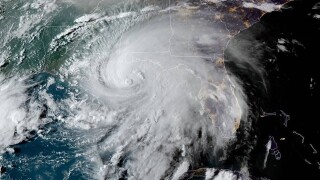-
North Carolina Farm Bureau raised $500mn with its latest Blue Ridge Re cat bond deal.
-
The cat bond market is on course for $56bn of notional outstanding by the end of this year.
-
The outcome of Eaton Fire subrogation is an uncertainty for some vehicles.
-
Insurers with SCS exposure reaped fewer benefits but still improved over Q3 2024.
-
The shift in multiples is indicative of price softening in the cat bond the past two years.
-
The average weighted spread on the deals was 651bps, skewed upward by cyber and wildfire deals.
-
Carriers are grappling with a rush of investor interest in longer-tail lines.
-
One William Street priced its debut cat bond 13% below the midpoint of guidance.
-
Covea’s Hexagon IV Re deal priced 13% below the initial target on a weighted average basis.
-
Some experienced investors are pivoting out of cat bonds and into the top layers of private ILS deals.
-
So far this year, there have been 11 first-time sponsors to place a deal.
-
Spreads on USAA’s latest deal priced below comparative issuances in 2023-2024.
-
Key topics include private ILS growth prospects and the longevity of longtail interest.
-
Sources have said $1bn+ of fresh capital from the region is expected to be deployed in 2026.
-
The new Verisk SCS model is increasing expected losses on aggregate bonds.
-
Despite the formation of Gabrielle, there is "a very high probability" of a below-average season.
-
Deals would need to be sized at $50mn plus for transfer to capital markets.
-
ILS executives talked pricing, capacity and opportunities in casualty at an ILS roundtable in Monte Carlo.
-
Terms are expected to hold, underpinning the stronger recent performance of reinsurers.
-
The Japanese carrier faces integration challenges to make a success of the deal.
-
After the LA wildfires in Q1, carriers got some relief in Q2 ahead of wind season.
-
Reinsurers are confident on cat rates and ready to deploy ILS capital.
-
The merged business of Twelve Securis ranked third among ILS managers for AuM, behind Fermat and RenRe.
-
Some $400mn of bonds priced in the past week, after a record-setting H1.






















